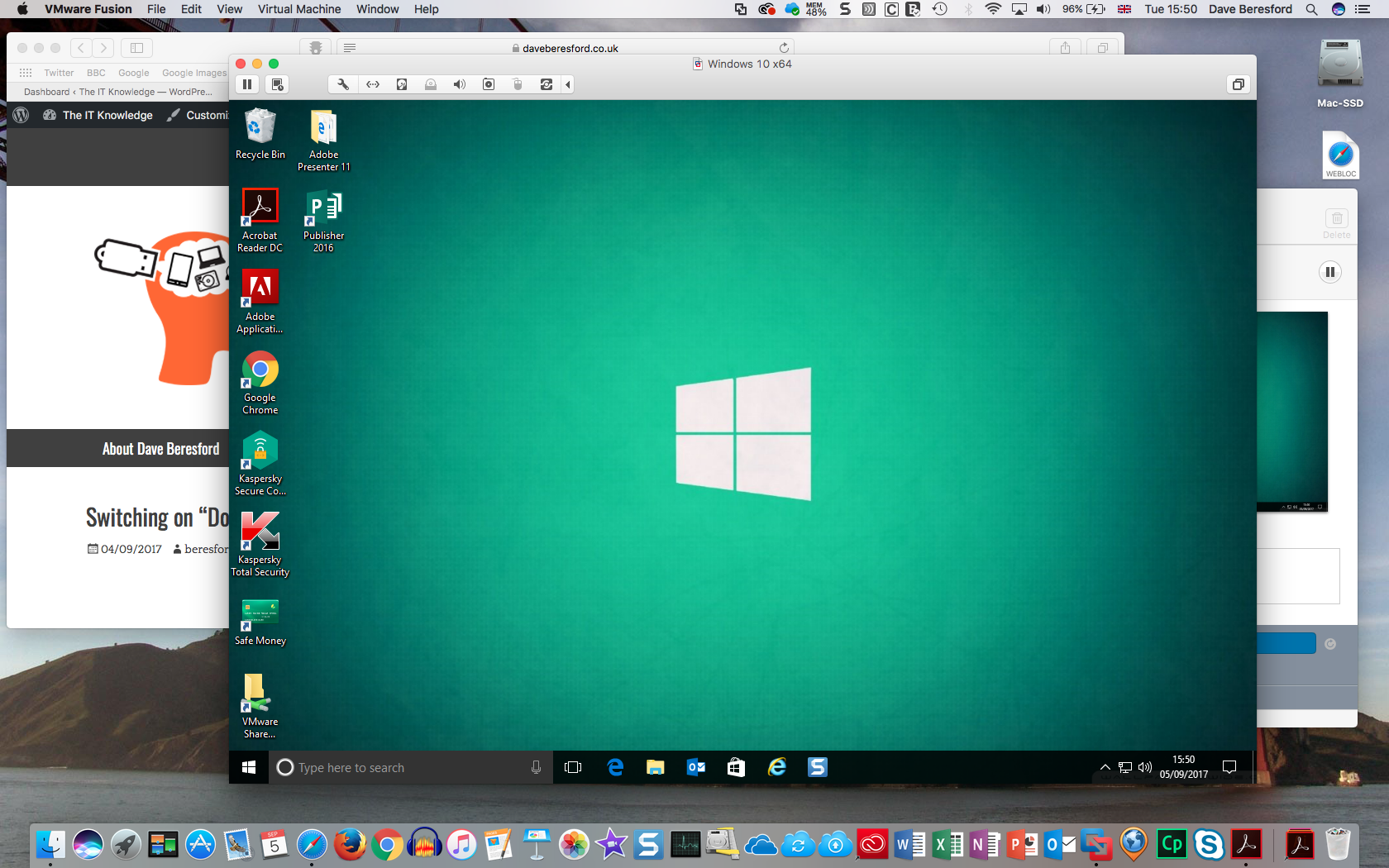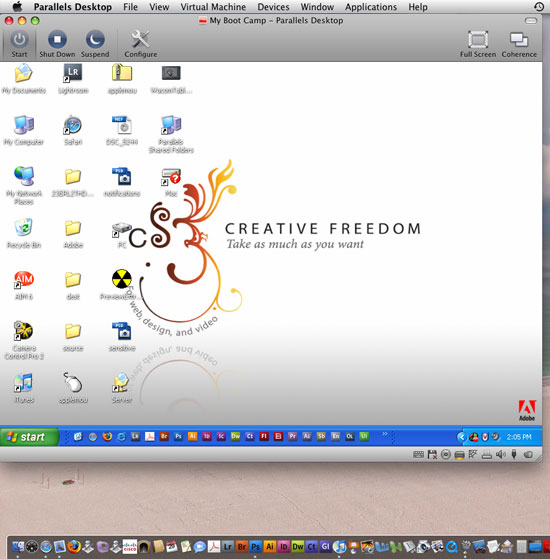Once you've set up Boot Camp, you have three different ways to make the switch between partitions. Let's look at these based on their starting points.
If you're in Windows, you can switch to the Mac OS X partition using the Boot Camp icon in the System Tray. Click the gray diamond-shaped icon, and click 'Restart in Mac OS' from the pop-up menu. Then, confirm your choice to reboot to Mac OS X and give the computer about a minute to make the switch.
I will test that but I don’t think so since the boot icon comes from the EFI partition. So I think the boot Name also comes from this partition. And i am pretty sure the name in windows is „Boot camp“ like in macOS. Only the boot screen shows „EFI boot“. – Kevin Lieser Nov 25 '18 at 17:51. Download Windows Bootcamp on OSX Mavericks: This tells you how to swi. Solved Switch boots using Boot Camp. Tags: Apple / 2015. Susja September 19, 2020 at 08:42:50 Specs: Mac OS Catalina, N/A. I am using MBP 2015 running OS. Use the Boot Camp Control Panel to choose input preferences. To open the panel, click the upward-pointing arrow near the bottom-right corner of the screen, click the Boot Camp diamond icon, and select Boot Camp Control Panel. Use the Keyboard and Trackpad tabs to manage your Windows preference for those accessories.
Advertisement
Advertisement

If you're in Mac OS X, you can switch to the Windows partition using the Startup Disk utility within System Preferences. In the Startup Disk, choose the 'Windows on BOOTCAMP' partition, and click 'Restart.' Then, confirm your choice to reboot to Windows and give the computer about a minute to make the switch.
If the Mac was powered off, you can choose which partition to boot before the Mac selects for you. To do this, press the Option key on the Mac while it's on the blank white boot screen. Within a couple of seconds, the Mac should present the two partitions to you on the screen. Use the arrow keys to select a partition, and press Enter to boot to it. This Option key feature is available either when booting from a powered-off state or if you're rebooting from Windows.

Ready for lots more information about Boot Camp? Switch on over to the next page.
Related Articles
More Great Links
Sources
- Apple. 'Apple to Use Intel Microprocessors Beginning in 2006.' Apple, Inc. Jun. 6, 2005. (Feb. 13, 2012) http://www.apple.com/pr/library/2005/06/06Apple-to-Use-Intel-Microprocessors-Beginning-in-2006.html
- Apple. 'Boot Camp Installation & Setup Guide.' Apple, Inc. 2011. (Feb. 13, 2012) http://manuals.info.apple.com/en_US/boot_camp_install-setup_10.7.pdf
- Buchanan, Matt. 'Cheetahs, Pumas and Tigers, Oh My: The Two-Minute OS X History Primer.' Gizmodo. 2007. (Feb. 13, 2012) http://gizmodo.com/267621/cheetahs-pumas-and-tigers-oh-my-the-two+minute-os-x-history-primer
- Diederen, Jeroen. 'Linux on Your Apple Mac | iLinux.' (Feb. 13, 2012) http://mac.linux.be/
- Microsoft Corporation. 'Windows 7 system requirements.' 2012. (Feb. 13, 2012) http://windows.microsoft.com/en-US/windows7/products/system-requirements
Contents
- 3.3 Dual Boot Windows 10 on Mac OS X 10.11
Not only has Apple been diligently working on a new OS, El Capitan, but Microsoft isn’t too far behind, either. In fact, their newest version of Windows is, in my humble opinion (although there are a lot of people who agree with me), the best one they’ve ever released. Many of us were unhappy with how Windows 8 looked, but the creators rectified that mistake by combining the familiarity of Windows 7 with the productivity of its successor.
Another great thing about this new OS is that is not solely available to Microsoft users, but Apple users can enjoy it, as well. Now, as a Mac user, you probably don’t want to part with your iOS, especially since you’ve gone through all that trouble of downloading El Capitan while it’s still in beta. What you can do is dual boot them, so you’ll get the best of both worlds. If you don’t really know how to go about this, I will walk you through the process.
Detailed Guide to Twin Boot Windows 10 on Mac OS X El Capitan
You don’t have to install Mac OS X El Capitan on your Mac device, you can also install it on an external hard drive, most especially when you want to access the OS quickly. You can consider Thunderbolt drives which are similar to the internal drives on Mac, or you can simply use the USB 3.0 external drive if you don’t have the Thunderbolt on your Mac. You will have to format an external drive before installing Mac OS X El Capitan, this will help to install the Mac OS X El Capitan safely on the hard drive and at the same time the configuration of your device will not be changed.
Step 1. Download Windows 10Obviously, you need an Internet connection, but I don’t want to be Captain Obvious here. So, go to their download page and sign up for the Insider Program. Once you’re signed in, scroll down and you’ll see two ISO files: x64 or x86. Depending on your OS, choose the one you need. If you’re not sure, x64 is for 64-bit OS, while x86 is for 32-bit. Not that x64 can install both version, but it’s still recommended to use the one that is more suitable.
Step 2. Create W10 InstallerFor this step, you’ll need Boot Camp Assistant. Open it up and check the options that say “Create a Windows 7 or later version install disk” and “Download the latest Windows support software for Apple,” then click 'Continue'. Now insert a USB drive into your computer (it has to have at least 16GB) and move the Windows ISO file to it. Boot camp will then ask you to confirm it, since the flash drive will be converted to FAT and everything on it will be deleted, so click 'Continue'. The file will start copying and will be renamed to WININSTALL. It shouldn’t take more than 10 minutes and, once it is done, you can move on to the next step.
Step 3. Make a new PartitionHow To Switch To Bootcamp
What will make this process easier is that you’ll be able to use Boot Camp Assistant for it, as well. Instead of checking the same boxes you did last time, select the one that says 'Install Windows 7 or later version' and go to 'Continue'.
Step 4. Choose a SizeNext, you’ll be asked to choose the size of your partition. You can go with any size that you want, but it’s recommended to have at least 30GB if you’re trying to install Windows 10 for the first time, or 40GB if you’re just updating it. It’s better to choose a little more extra space, just in case. Once you do that, click on 'Install'. When the installation has finished, your Mac will automatically restart.
Step 5. Set up Windows 10Next, you’ll see the logo of Windows. Choose the language you want the OS to use and hit 'Install'. You’ll see two types of installation: the Upgrade and the Custom one. Choose the custom one and the partition you’ve created earlier. When you're done with that, click on 'Format' and then, 'Next'. Then you just wait until Windows finishes the rest on its own.
Step 6. Sign inYou’ll be asked to create an account and set up a pin, just like you would if you were installing it on a Windows computer. The only new thing with Windows 10 is that there’s now a pin, not a password, but it’s pretty similar, so you shouldn’t have any trouble with it.
 Step 7. Juggling between Windows 10 and El Capitan
Step 7. Juggling between Windows 10 and El CapitanHow To Switch From Bootcamp To Mac
From that point forward, you can normally use your new Windows 10. In case you want to switch between the two systems, you just need to turn off your computer and hold the Alt key when it’s booting again. It will open the 'Start Manager' where you can choose to use either Windows or Apple.
 Step 8. Removing Windows 10 (Optional)
Step 8. Removing Windows 10 (Optional)If at any point you decide that you don’t want to have Windows 10 on your Mac, you can simply delete it. What you do is you go to 'Disk Utility', select the file that should be called Macintosh HD and click on 'Partition'. Then, choose the smaller one on the bottom that is untitled and click the minus (-) sign. Click on 'Remove' and voila – Windows 10 will be deleted, alongside anything you had stored on it.
